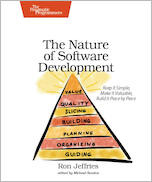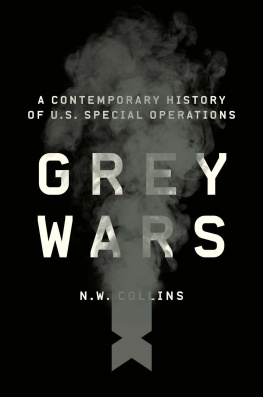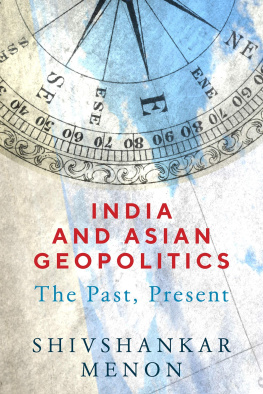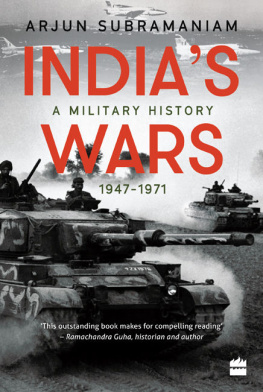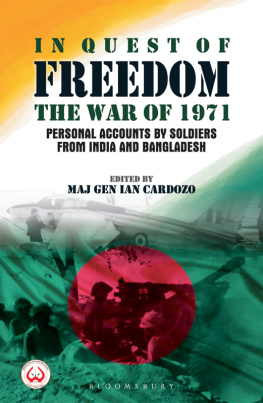Our own generation is unique, but sadly so, in producing a school of thinkers who are allegedly experts in military strategy and who are certainly specialists in military studies (also called Strategic Studies by some) but who know virtually nothing of military history, and who do not seem to care about their ignorance.
B ERNARD B RODIE
F ull Spectrum: Indias Wars, 1972-2020 is the second part of what is envisaged to be a holistic attempt at understanding war and conflict in contemporary India. Indias Wars: A Military History, 1947-1971 was the first, and it struck the right note by setting the stage for a sequel, one not unlike a second pass over a target area by fighter aircraft.
A second pass is carried out when there is ammunition left, to ensure that the target is destroyed. However, if the first pass is not good enough, this move is fraught with danger because the element of surprise is lost. Unless a new attack pattern or an unpredictable flight profile is adopted before a second attack, the enemy could be lying in wait with interceptor aircraft and ack-ack (military slang for anti-aircraft guns) or surface-to-air missiles (SAMs). The first kills achieved by the Indian Air Force (IAF) in the 1971 war with Pakistan were the result of a four-aircraft Pakistani Sabre aircraft formation carrying out repeated passes in a predictable pattern over an Indian Army brigade in the Boyra Sector of the erstwhile East Pakistan. It was this careless bit of tactical flying that allowed the Indian Gnat aircraft (affectionately called the last real fighter by the fighter pilots who flew them) to pounce on them from above. The Sabres paid a heavy price for their complacency.
As fighter pilots pull out of an attack and reposition for a second pass, most do a quick recap of the previous attack. They first try to assess the damage they have caused while simultaneously checking their Radar Warning Receiver (RWR) for any lock-on from an airborne fire-control radar or the tracking radar of a SAM. A deep breath and check of engine and weapon parameters follows. In the meantime, if the attack has been controlled by a ground-based Forward Air Controller (FAC), pilots wait for feedback on the previous attack. All this would typically take about 30 to 45 seconds before the next attack commences. Everything happens in a blur at speeds of 700-850 kmph.
The second pass is done rapidly and all ammunition expended, following which they duck down to tree-top level and head home after regrouping with other formation members. There is no relaxing till they cross the border and hear the calming voice of a friendly radar controller, who guides the formation back to base. After landing, the adrenalin is still pumping, knees are generally wobbly, and overalls invariably drenched with sweat. One of the most important factors for an effective second pass is the speed at which the pilots assess any changes in the environment, the impact of their first attack and the configuration of the next one whether they should stick to the same pattern, or do something different. Full Spectrum: Indias Wars, 1972-2020 is much like a consistent second pass. It adheres to an applied military history narrative that weaves the strategic and operational dimensions of war and conflict in contemporary India with tactical vignettes and credible personal perspectives to create what is hopefully a coherent mosaic of contemporary Indian military history.
All conflicts that India fought before 1971 were mostly conventional wars that could be sequenced chronologically. The only departures from this were the two insurgencies in the north-eastern states of Nagaland and Mizoram, and the India-China skirmishes at Nathu La and Cho La in 1967, which I could not cover in my first book. I have respected reader feedback and covered them in this volume along with a few United Nations (UN) peacekeeping operations in the 1950s and 1960s as part of a larger examination of Indias combat experiences in pursuit of global peace in troubled lands.
As was the case with Indias Wars , this volume retains a practitioners flavour and is reinforced with scholarly rigour. The credibility of the narrative rests on three pillars triangulation of facts and authenticity derived from the available primary sources (mainly regimental archives, official doctrines, personal papers and interviews); deep mining of secondary sources and existing literature; and a practitioner-scholars unique perspectives on war and conflict. This is so because much of the actual fine print of how the Indian state has conducted military operations is still shrouded in secrecy and has not been regularly declassified. Unrestricted access to Lieutenant General Rostum Nanavattys meticulously preserved diaries and recollections gave me the much-needed primary sources to dissect operations in those sectors and construct my narrative. Interviews and conversations with almost a hundred serving and retired officers and men (some of whom wished to remain anonymous), including former chiefs from all the three armed forces, served as highly credible primary sources for land, air and naval operations.
The Indian Army has over 1.2 million personnel, the Indian Navy has about 100 frontline combat ships while the IAF has over fifty squadrons and 800 aircraft. These are large forces that have been in a near constant state of readiness and seen much action. I have tried my best to write a representative and running history that does justice to all the three services without fear or favour. I reiterate my deepest respect for all the regiments, fleets and squadrons of Indias armed forces, and any omissions are only because there was just no space to fit in all that I wanted to write about. Some warriors emerge as larger-than-life characters in my book, but that does not in any way suggest that others stood on the sidelines and watched. This is essentially a book about Indias contemporary soldiers, sailors and airmen, and I have tried to ensure that they occupy pole position in the book. Writing about war and conflict, especially when one has witnessed success and failure from the inside, has been perilous. Many of the protagonists I have written about are battle-hardened professionals and practitioners, and my contextual and measured criticism in hindsight may appear harsh at times. All I can do is seek their indulgence and magnanimity.
This book is also about how the Indian nation-state and its armed forces have coped with the changing contours of modern conflict in the decades since 1972. During this period, Indias democracy has flourished, surmounting many challenges even as multiple geopolitical fractures have plagued the world. One needs to look no further than the Soviet Union, the Balkans, West Asia and the Caucasus to situate Indias predicament and progress in the right strategic context. This book asks the same questions, but from an Indian perspective, that Sir Lawrence Freedman asked in the introductory chapter of War, a 1994 compilation of essays: What are the causes of War? How have they been fought and what are the prospects for the future? Are there basic principles which should shape the conduct of war if it is to be successfully prosecuted?
The narrative also offers a changing perspective of how India has approached the conduct of war and conflict in contemporary times. This includes the 2016 surgical or cross-border strikes across the Line of Control (LoC) with Pakistan by the Indian Armys Special Forces, the face-off with the Chinese at Doklam in 2017, the pre-emptive punitive strikes by the IAF against terrorist camps in Pakistan in 2019, and the large-scale aerial engagement between the IAF and the Pakistan Air Force (PAF) the following day. The structure of the book offers readers a choice of either embarking on a comprehensive and chronological examination of war and conflict in contemporary India, or doing a selective reading based on specific timelines or campaigns. Considering the rather secretive role of Indias armed forces in the development of Indias nuclear capabilities, these have not been discussed in the book. Space and cyber capabilities are still fledgling areas and remain predominantly in the highly classified domain. They do not find mention in what is primarily a historical narrative. Indias Central Armed Police Forces (CAPF) and paramilitary forces (PMF), particularly the Assam Rifles, Border Security Force (BSF), the Central Reserve Police Force (CRPF) and the Indo-Tibetan Border Police (ITBP), have done a sterling job along with some state police forces in complementing Indias armed forces in a wide range of operations. I could not possibly have done justice to their exploits in this volume.


